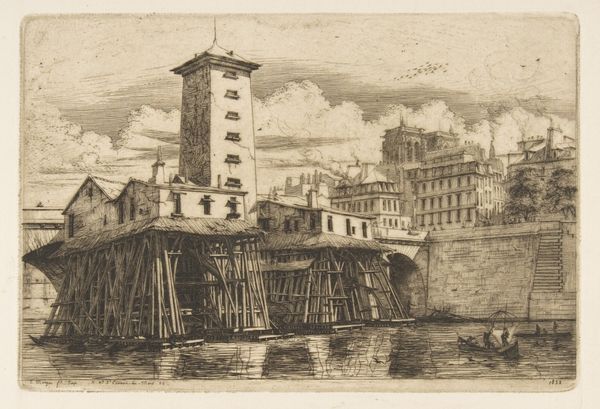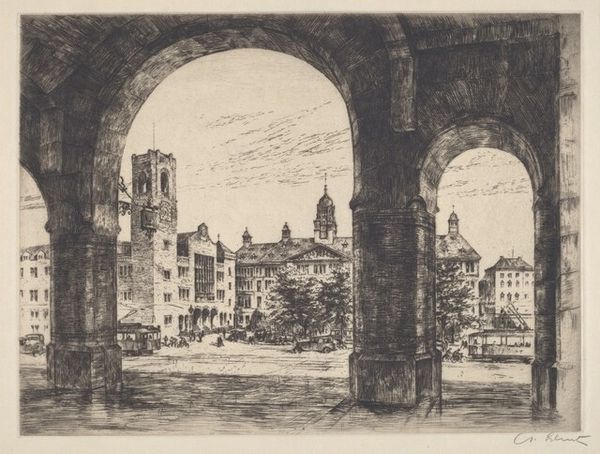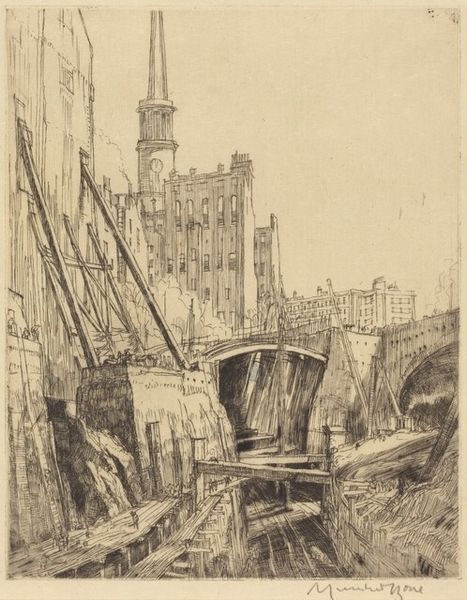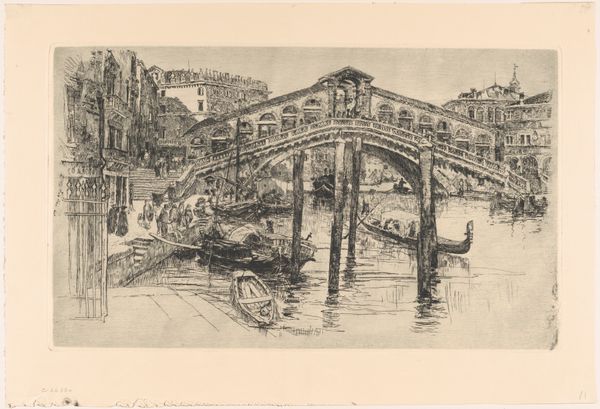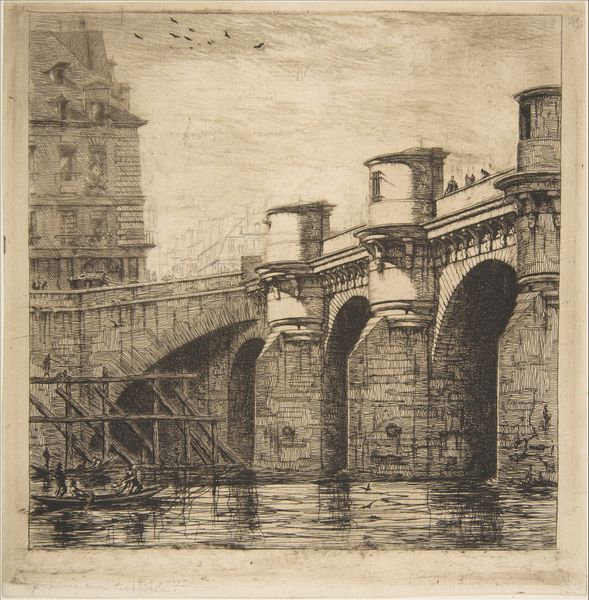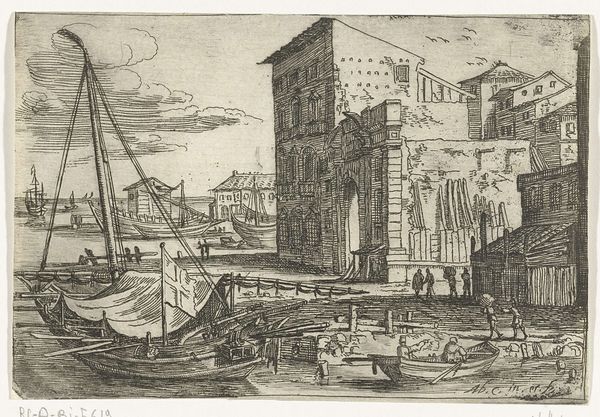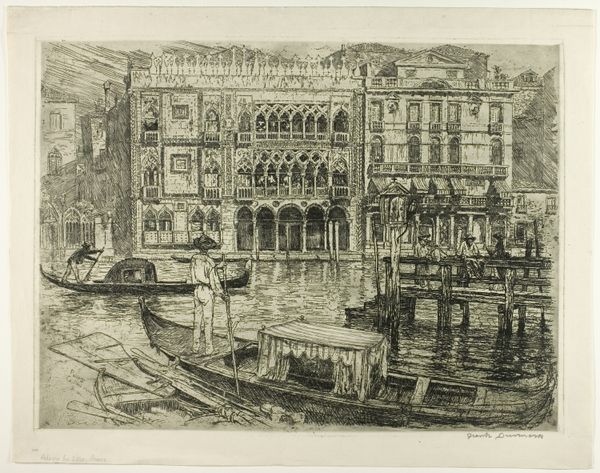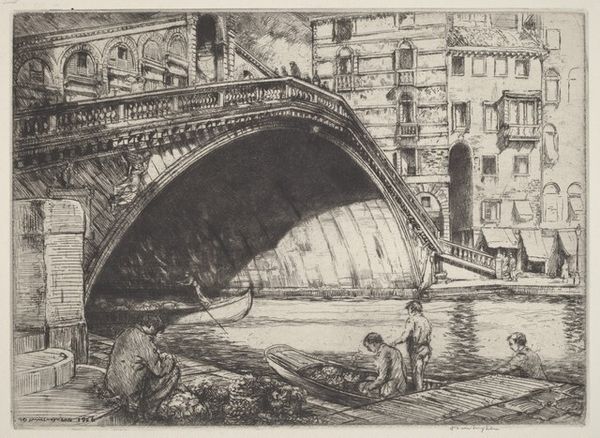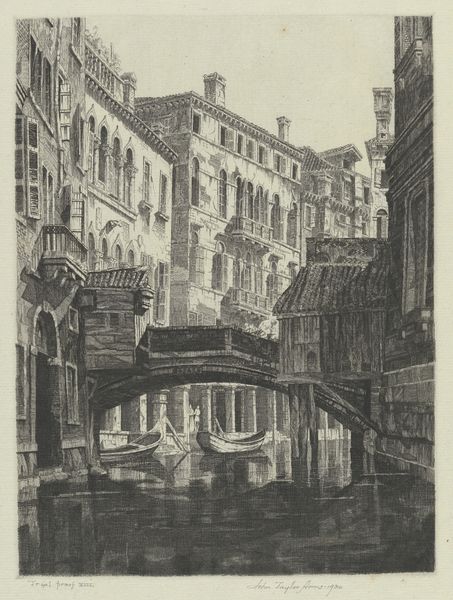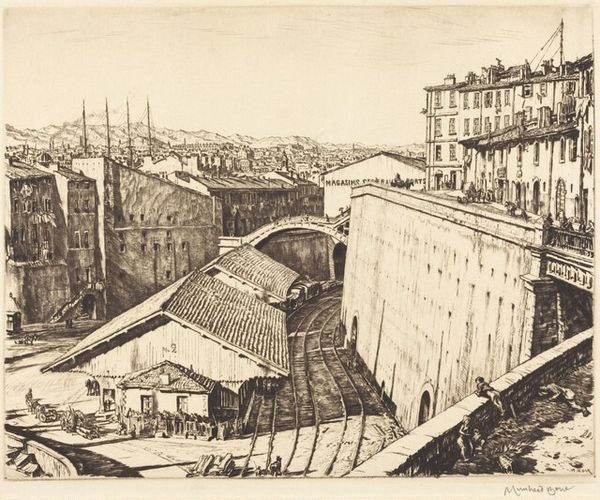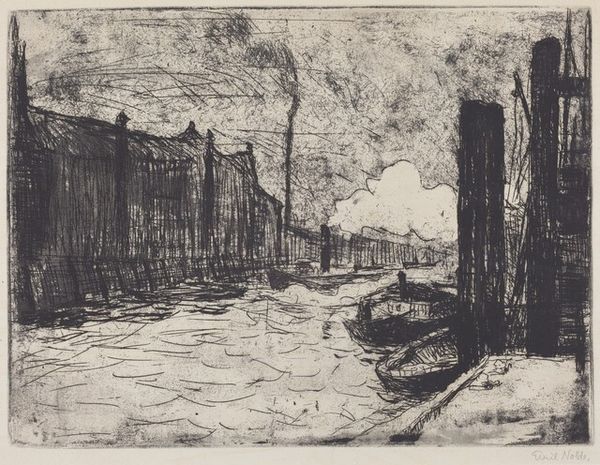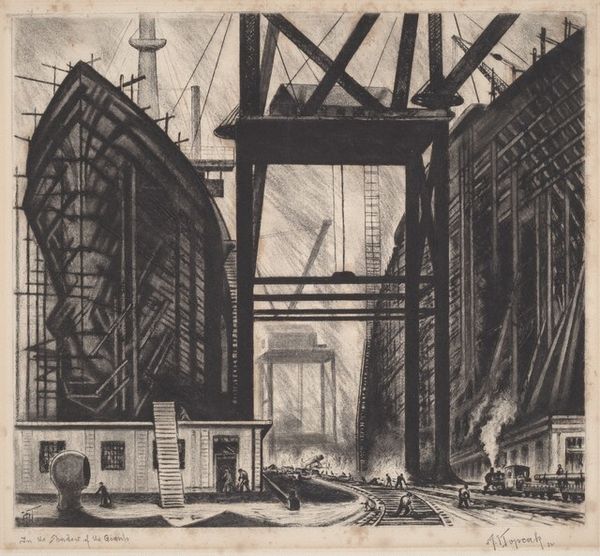
print, etching
pen and ink
ink drawing
pen drawing
etching
landscape
cityscape
Dimensions: plate: 22 × 23.3 cm (8 11/16 × 9 3/16 in.)
Copyright: National Gallery of Art: CC0 1.0
Editor: This is Henry Rushbury's "Canal de la Douane, Marseilles" from 1923, rendered in etching. It depicts a busy canal scene. The details achieved using simple lines feel very captivating. How would you interpret the impact of this image through a formalist lens? Curator: The interplay of light and shadow, achieved through meticulous cross-hatching, is central. Notice how Rushbury guides our eye using linear perspective towards the background buildings. The subject matter is subservient to the masterful control of the medium. Observe how the artist emphasizes the verticality of the structures against the horizontal flow of the canal. Does that hierarchy evoke a sense of visual tension? Editor: It does. The strong vertical lines give the buildings a sense of importance, even power. But doesn't this detract attention from the activities in the water itself, or on the bridge? Curator: The busyness you perceive is created precisely by the artist’s technique. The detailed pen strokes coalesce to represent the activity. Reduction to basic form isn’t literal depiction, but representation of energetic visual experience. It prompts considerations beyond direct interpretation of the cityscape as a specific setting. What relationship, then, exists between medium, representation, and subjective viewer? Editor: So, by analyzing the technical elements like line, shading and composition, we gain a deeper appreciation, shifting away from mere subject matter. Curator: Precisely. The focus rests on the how more than the what. Hopefully this exploration illustrates how rigorous visual examination elevates the understanding of artwork, even something as seemingly straightforward as an urban canal view.
Comments
No comments
Be the first to comment and join the conversation on the ultimate creative platform.
